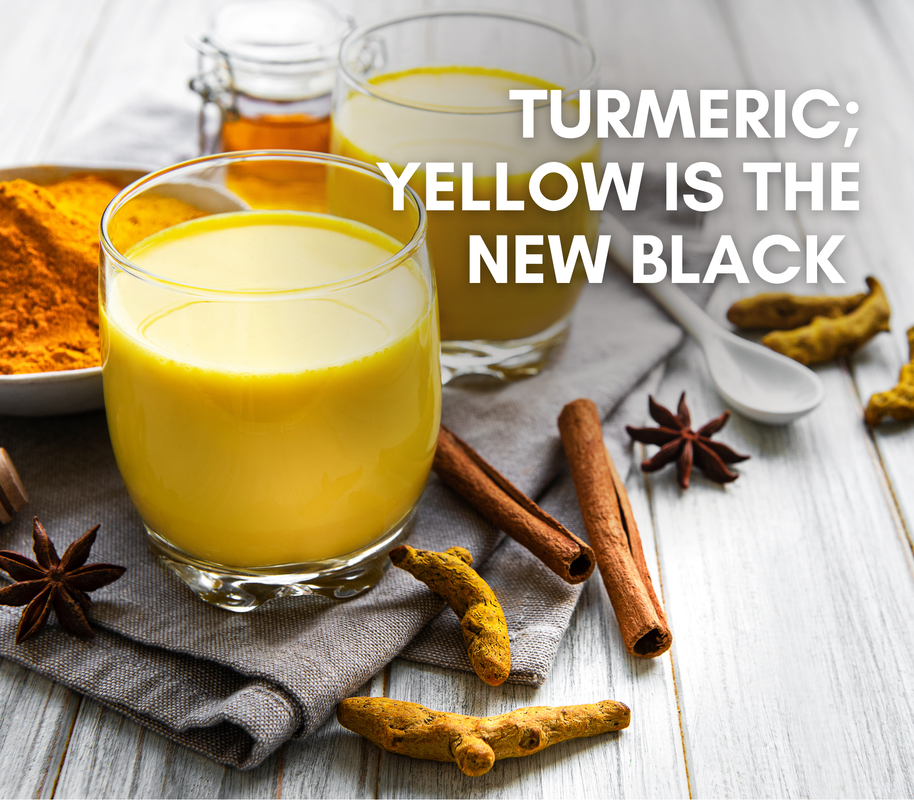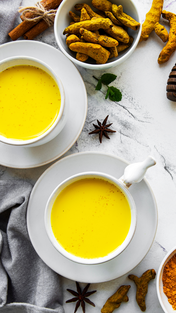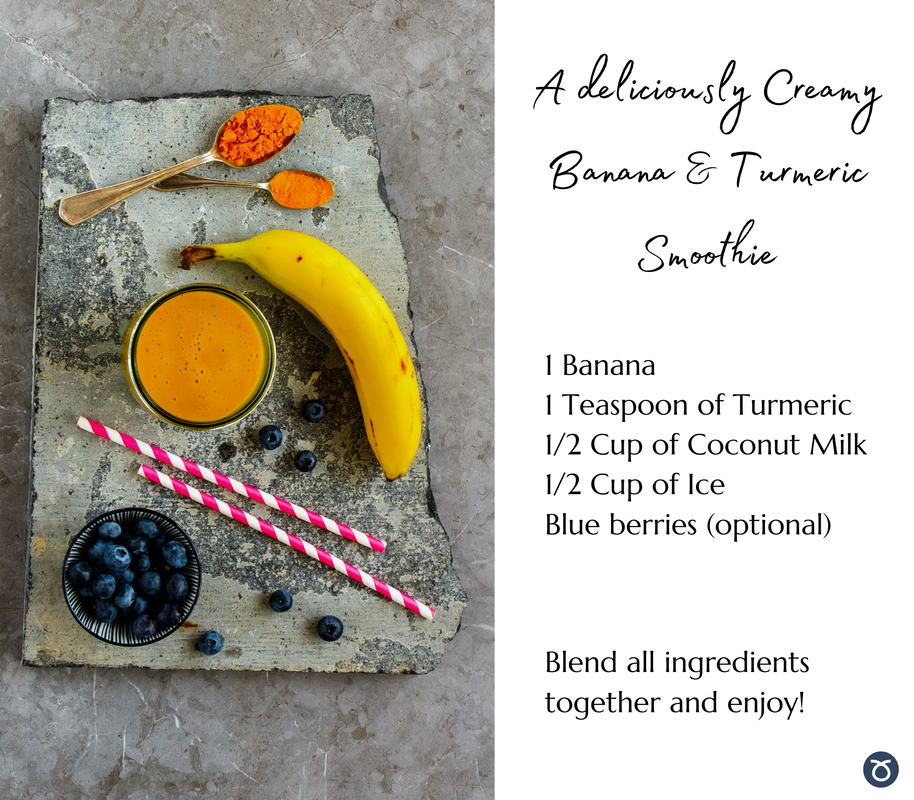- Home
-
Qualifications
- Diploma in Nutrition and Health Coaching
- Womens Health and Wellness Coach Certification
- Certified Coaching Professional Program
- Diploma in Coaching for Lifestyle & Wellbeing Management
- Holistic Wellness Coaching Program
- The Ultimate Triple Qualification
- Health Coaching Electives
- Wellness Coaching for Professionals
- Coach Gap Training
- Professional Certificate in Meal and Menu Planning
- Accreditation, Registration & Insurance Options
- Degree & Diplomas
- Short Courses
- Testimonials
- Enrol
- FAQs
- About
- Contact
- Login
- Things We Do
|
From the ancient Indian practice of Ayurveda, turmeric has made a come back, it's the new black, or is the new organge, since black replaced orange.... either way, it's super healthy, but how you use it is important. Super Nutrition onlilne course * Introduction to Herbal Medicine * Women's Health & Hormones These days you can’t walk into a café without seeing a turmeric latte on the menu. Yes, I know, It is a little odd at first, after all a latte isn't exactly in the spice zone. The latest research suggests, turmeric is fast overtaking many modern medicinal options in popularity. This begs the question, why is everyone going turmeric crazy and why is the research saying it is becoming one of the number one spices to get into your diet any which way you can (and enjoy it)? Turmeric, a relative of ginger (just look at it and you can tell), has been around for thousands of years; nearly 4000 years in fact. This seriously beautiful bright yellowy-orange spice originated in India. It's used not only in cooking but in religious and spiritual events, and most importantly in traditional Indian medicine, also known as Ayurveda. It's believed that turmeric is associated with fertility, prosperity and spiritual purification, so you guessed it you'll see it being used in marriage rituals throughout India and Southeast Asia. Let's move on from the history side of things and take a look at 'where it's at now'. Science is increasingly showing us that we might all benefit from 'a little spice' to get some super nutrition back into our diets. What does the research say?Research continues to highlight the multitude of benefits turmeric offers, just a few of the more notable medicinal properties (without getting into the nitty gritty chemistry) of turmeric includes:
The most active compound in turmeric appears to be the phenolic compound curcumin. Curcumin has been found to induce apoptosis; in other words, it initiates the death of cancer cells, and appears to do this by interfering with the cells access to energy, its nourishment, division, proliferation, and by blocking signals for cell functioning. Take that cancer!!!! Turmeric and diabetes There also appears to be some great news on the horizon for diabetics. Studies are showing a consistent effect of curcumin on blood sugars. For example, animal studies have shown that blood glucose, insulin resistance and blood lipids all improved when turmeric was consumed in the diet. A review of the evidence found that whilst most studies have focused on the benefits of curcumin around diabetic nephropathy (loss of nerve function from a lack of glucose energy needed for nerves to work), curcumin had a positive effect on most aspects of diabetes, including insulin resistance, low blood sugar, high blood lipids, and inhibition of pancreatic tissue breakdown. Turmeric and anti-aging Studies have also found that curcumin increases the cellular anti-oxidant defense systems in the skin and may play a role in anti-aging. I know what you’re thinking… That turmeric latte is looking way better now!!!
Getting the most from your turmericOne of the challenges in getting the best out of turmeric, is around the low bioavailability (the rate at which the compound is absorbed by the body) of turmeric when consumed on its own. Turmeric has a poor solubility in water, and is poorly absorbed across the intestinal cell. And, just to make things even trickier, it’s rapidly broken down (Siviero A et al 2015). This rapid breakdown is linked to a process called glucuronidation which is used to render a compound like curcumin more water soluble, resulting in the direct elimination of the compound from the body. Now we don't want to dash your hopes here, there is a simple solution... why else would it be such a universally used spice. Research has shown some very promising options for getting the best from your turmeric. For example, compounds in our diets such as, quercetin, found in green leafy greens, genistein found in soy, eugenol found in clove oil, epigallocatechin gallate found in green tea and lucky last resveratrol found in red wine all aid the uptake of curcumin. Yes, I said red wine! I like mine 'warm' with a touch of fatIf you're a chai connoisseur you'll have heard of chai spice, this is where the tea includes some pepper. Now there is good reason for this, beyond mere taste bud explosion. The compound piperine in black pepper appears to increase curcumin's bioavailability by 20 times (Siviero A et al 2015). Boom!!! Of course not all of us like the heated sensation from pepper in our beverages or even our foods, so here's an even simpler solution. There is evidence to suggest that combining curcumin with ingredients that are higher in fat, such as dairy, coconut, olive oil and so on, increases the absorption from the intestines and also inhibits the process of glucuronidation (elimination of the compound) and therefore can also increase the bioavailability of curcumin. Boom, boom!!! Keep it in check if you've got kidney or gallbladder issuesWOW! Who would’ve thought, a spice we all walk past in the spice isle of the supermarket without a thought, has so many benefits and is certainly living up to its reputation. Just one precautionary note, there is some evidence to suggest that the active compound curcumin can increase urinary oxalate levels, which may increase the risk of kidney stone formation in those who are prone to developing them. As always, please enjoy in moderation, and if you have an existing medical condition always seek medical attention from those qualified to do so first. With all this in mind we have developed a recipe for you to get the most out of turmeric
AuthorLeanne Cooper is the Founder and Director of Well College Global. Registered nutritionist and mother of two. Mindset and Clarity Coach, Mentor, Author, and Educator.
0 Comments
Leave a Reply. |
AuthorsBev Whyfon; Bev's Healthy Food Archives
July 2024
Categories
All
|
|
CONNECT WITH US
|
- Home
-
Qualifications
- Diploma in Nutrition and Health Coaching
- Womens Health and Wellness Coach Certification
- Certified Coaching Professional Program
- Diploma in Coaching for Lifestyle & Wellbeing Management
- Holistic Wellness Coaching Program
- The Ultimate Triple Qualification
- Health Coaching Electives
- Wellness Coaching for Professionals
- Coach Gap Training
- Professional Certificate in Meal and Menu Planning
- Accreditation, Registration & Insurance Options
- Degree & Diplomas
- Short Courses
- Testimonials
- Enrol
- FAQs
- About
- Contact
- Login
- Things We Do





 RSS Feed
RSS Feed
